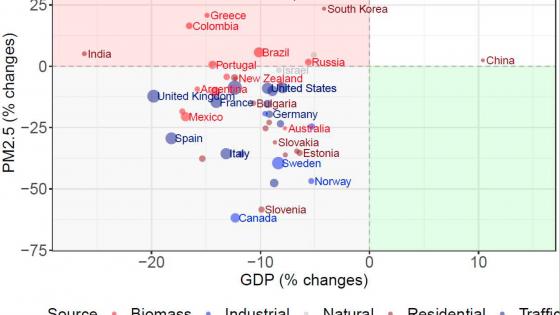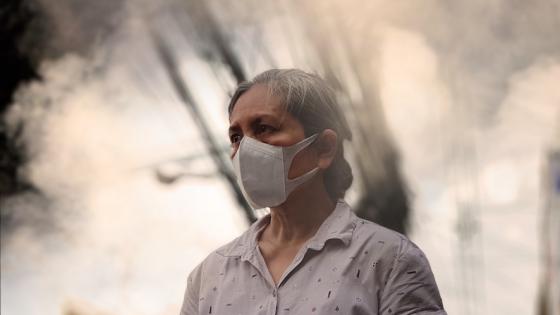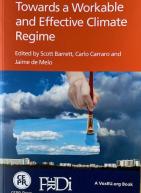The wreckage of COVID-19 has drastically exceeded anyone’s imagination. Since the first reported outbreak in Wuhan, China in early 2020, the number of pandemic deaths has crept over 3.7 million, leaving disastrous economic and social consequences in its wake. At its peak, considerable attention was paid to containing the spread of the virus (von Bismarck-Osten et al. 2021, Blanchard-Rohner et al. 2021, Bonardi et al. 2020a, 2020b) and creating a policy mix that could attenuate looming recessions and rising poverty (Baldwin and di Mauro 2020a, 2020b, Bonardi et al. 2020b).
Today, as vaccination offers a light at the end of the tunnel, questions about how to manage a post-pandemic world have become more pressing. Among those questions, of course, is the number one problem of our generation: How to counter climate change and build a more sustainable economy. As COVID-19 proliferated and lockdowns were imposed, the global ‘anthropause’ provided just the kind of natural experiment to better understand the environmental cost of mobility and globalisation, and how to minimise this cost going forward.
A series of studies showed drops in pollution during the first few months of the pandemic across parts of the globe (Venter et al. 2020, He et al. 2020, Forster et al. 2020). In contrast, our recent article (Bonardi et al. 2021) provides new insights into the economy-environment relationship by estimating the worldwide environmental consequences of lockdown measures over the medium-run across 162 countries. This longer-run evidence provides precious information on the extent of air quality improvements that are attainable, which may constitute key informational input for designing sustainable policies that can bring the environment ‘back on track’.
Drawing on an especially rich sample, we find that domestic and international lockdown measures translated overall into a 35–45% medium-run reduction in pollution, going beyond existing short-run estimations. Interestingly, our documented air quality improvements persist in the medium-run, even as lockdowns lifted. The study shows that some country trajectories are much more appealing than others, with fewer COVID-19 casualties, less economic downturn, and bigger pollution reductions.
We use fine particle pollution (PM2.5) as our air quality indicator because it is the pollutant with the most acute health consequences. PM2.5 levels are also used by the World Health Organization as the main indicator of population exposure to pollution. Although pollution monitoring networks exist, they offer sparse geographic coverage. Instead, we leverage daily, high-resolution satellite retrievals from NASA (Gelaro et al. 2017). This unique data offers complete coverage, roughly equivalent to placing a monitor every 50km across the planet.
Figure 1 Global distribution of pandemic-induced air quality changes
Notes: Cell values describe the difference in mean log-PM2.5 before and after the first inside NPI measure relative to the same pre-post difference in 2019. The ‘before’ period extends to November of the previous year until the lockdown date. The ‘after’ period extends to 31 August. From Bonardi et al. (2021).
Building back a sustainable economy
Our second result unlocks the blueprint for building back better: We find unequal air quality impacts across the world (Figure 1), even among countries with similar lockdown stringency. To understand why, note that pollution is a negative externality from common economic activities such as industry, transport, heating, and cooking. Whereas the cascade of lockdowns starkly reduced mobility and industrial activity, the net impact on energy use is more complex, as working from home became the new normal. Put differently, when restrictions were placed on some economic activities (transport and industry), people shifted to different ones (domestic energy). In this example, contrary to conventional wisdom, reductions in economic activities could be bad for the environment in countries where domestic energy is the largest pollution source. Policies to combat climate change must take these diverse responses to regulation into account.
Our study carefully uncovers these heterogeneities in order to inform tractable environmental policy prescriptions. Figure 1 shows that most of the Americas, Europe, Southern Africa, East Asia and the Pacific saw improved air quality (purple) during lockdown, but some parts of South America and Asia (orange) saw their air quality worsen. The existence of heterogenous sources of air pollution across regions (Lelieveld et al. 2015) largely explains the variation and reveals the complexities of comprehensively tackling pollution.
Domestic energy use, agriculture, and power generation are among the dominant pollution sources in urban areas of Asia, South America, and Africa, in contrast to developed countries in North America and Europe, where most emissions come from transport and industry. Figure 2 shows that areas that experienced air quality improvements had industry or transport as the main pollution source, whereas areas with no changes or air quality deterioration were often the same regions where the dominant pollution sources include agriculture, residential biomass burning, or power generation, including Greece, Japan, and Brazil.
Figure 2 Air quality changes in urban areas, GDP changes, sources of air pollution and COVID-19 related mortality
Notes: GDP and PM2.5 are measured as the difference in mean values between the first and second quarter in 2020 relative to the same difference in 2019. COVID-19 related deaths are the sum of deaths in the second quarter of 2020. The sources of air pollution are the sources responsible for the largest impact of PM2.5 on mortality in 2010. The GDP data are from the OECD, while Covid deaths data are from the European Centre for Disease Prevention and Control (Bonardi et al. 2021).
The development economic literature shows that the composition of economies changes during the process of structural change, often from agriculture to industry and then to service-dominated economies (Herrendorf et al. 2014). Thus, environmental quality and economic progress can improve in tandem when shifts toward cleaner production counteract the environmental damage from increased production. Our results suggest that such complexities may also exist in the short-term, when people respond to COVID-19 restrictions by switching to other more highly polluting activities that are less affected by lockdowns, such as increased pollution from heating.
Despite large global air quality improvements, the price of COVID-19 lockdowns was overwhelmingly high. Looking forward, our results suggest taking a more nuanced policy approach than ‘blanket’ restrictions on economic activity. Building back better a sustainable economy requires designing market-based instruments that reward a shift towards cleaner production and consumption of goods and services. Such an approach not only puts a price on pollution through taxes or quotas, such as the carbon taxes or the recent European plastic tax, but will also incentivise innovation and investments in green technologies.
In conclusion, there is a popular notion that the environment is bouncing back during COVID-19 while humanity stays at home. Our study shows that the reality is much more complex. As restrictions are rolled back and vaccination drives sweep the globe, we can choose to ‘return to normal’, or to learn from the pandemic experience and ‘build back better’ a sustainable economy. Our findings can inform smart environmental policy design in tandem with broad lessons (Metcalf and Stock 2020) from the experience of carbon taxes (Andersson 2019) and cap-and-trade systems that reduce greenhouse gas emissions. Past pandemics have forced humans to reimagine their future. This one is no different.
References
Andersson, J J (2019), “Carbon Taxes and CO2 Emissions: Sweden as a Case Study”, American Economic Journal: Economic Policy, 11(4): 1–30.
Baldwin, R and B Weder di Mauro (2020a), Economics in the time of COVID-19, CEPR Press.
Baldwin, R and B Weder di Mauro (2020b), Mitigating the COVID economic crisis: Act fast and do whatever it takes, CEPR Press.
Bismark-Osten, C v, K Borusyak and U Schönberg (2021), “School closures did not contain the spread of the coronavirus in Germany”, VoxEU.org, 8 May.
Blanchard-Rohner, G, B Caprettini, D Rohner and H-J Voth (2021), “Impact of COVID-19 and ICU capacity on vaccination support: Evidence from a two-leg representative survey in the UK”, Journal of Virus Eradication: 100044.
Bonardi, J-P, Q Gallea, D Kalanoski and R Lalive (2020), “Fast and local: How did lockdown policies affect the spread and severity of the covid-19”, Covid Economics 23: 325–351.
Bonardi, J-P, A Bris, M Brülhart, J-P Danthine, E Jondeau, D Rohner and M Thoenig (2020), “The case for reopening economies by sector”, Harvard Business Review, 19 May.
Bonardi, J-P, Q Gallea, D Kalanoski, R Lalive, R Madhok, F Noack, D Rohner and T Sonno (2021), “Saving the world from your couch: The heterogeneous medium-run benefits of COVID-19 lockdowns on air pollution”, Environmental Research Letters, forthcoming.
Forster, P M, H I Forster, M J Evans, M J Gidden, C D Jones, C A Keller, R D Lamboll et al. (2020), “Current and future global climate impacts resulting from COVID-19”, Nature Climate Change 10(10): 913–919.
Gelaro, R, W McCarty, M J Suárez, R Todling, A Molod, L Takacs, C A Randles et al. (2017), “The modern-era retrospective analysis for research and applications, version 2 (MERRA-2)”, Journal of Climate 30(14): 5419–5454.
He, G, Y Pan and T Tanaka (2020), “The short-term impacts of COVID-19 lockdown on urban air pollution in China”, Nature Sustainability 3(12): 1005–1011.
Herrendorf, B, R Rogerson and Á Valentinyi (2014), “Growth and Structural Transformation”, Handbook of Economic Growth, vol. 2: 855–941.
Lelieveld, J, J S Evans, M Fnais, D Giannadaki and A Pozzer (2015), “The contribution of outdoor air pollution sources to premature mortality on a global scale”, Nature 525(7569): 367–371.
Metcalf, G E and J H Stock (2020), “Measuring the Macroeconomic Impact of Carbon Taxes”, AEA Papers and Proceedings, 110: 101–106.
Venter, Z S, K Aunan, S Chowdhury and J Lelieveld (2020), “COVID-19 lockdowns cause global air pollution declines”, Proceedings of the National Academy of Sciences 117(32): 18984–18990.













